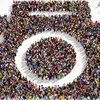Style, substance, showcase: how the Pratibimba exhibition celebrates 9 years of photography and art
In this two-part photo essay, we share highlights from this outstanding exhibition in Pune, along with insights from Shridhar Deshpande, Founder of Sheil’s Photography.
Launched in 2014, PhotoSparks is a weekly feature from , with photographs that celebrate the spirit of creativity and innovation. In the earlier 435 posts, we featured an art festival, cartoon gallery. world music festival, telecom expo, millets fair, climate change expo, wildlife conference, startup festival, Diwali rangoli, and jazz festival.

The ninth edition of the Pratibimba photography exhibition was recently held in Pune, featuring 60 photographs by 38 photographers. As shown in this pictorial essay, they span landscapes, wildlife, portraits, street life, and abstract works, from Asia, Africa, and Europe.
Held at the Raja Ravi Verma Art Gallery in Jawaharlal Nehru Samskritik Bhavan, the show was organised by Sheil’s Photography. It was founded in 2009 by Shridhar Deshpande as an education and exhibition platform for photographers.
It offers workshops in digital photography, post-processing, studio photography, and product ad shoots. There are also bird photography workshops conducted at locations like the Bhigwan water body, and wildlife photography camps at Tadoba, Kanha, and Pench.
“Photography is a perfect way to discover oneself. It allows the freedom to reach for and capture what the mind desires,” explains Shridhar Deshpande, in a chat with YourStory. A graduate of Fergusson College and IIT Bombay, Shridhar was earlier in the IT industry, at and ATOS.
“Sheil’s Photography was founded with the aim of promoting the art of aesthetic photography,” he adds. This ranges from quality education to practice in concepts and ethics. Working professionals as well as fulltime students can learn at their convenient pace, under the approach of “learn, nurture and discover.”
Its Earnest Photographers’ Group explores deeper issues of one’s creative personality, and has over 2,600 members across India. It conducts monthly thematic meetups, annual activities, and scheduled outings for photography.
The annual Pratibimba exhibition-cum-sale event was launched in 2011. Participants can submit up to five entries each, with an entry fee of Rs 500. Photographs selected by a jury are printed, designed and framed centrally, in order to ensure consistent quality.
Themes of the exhibitions have included Reflections of the Mind, Obviously Arty, Stories in Light, and Beyond Obvious. Prices are selected by the photographer, above a certain base value. Photographs were priced this time from Rs 2,500 to Rs 20,000.
The photographer lineup includes Sampanna Agnihotri, Sachin Kalhane, Anand Damle, Amit Kumar, Santosh Patel, Parag Joshi, Sanjay Dhar, Lalit Shahane, Vikas Kalagi, Vikas Datta, Vinay Sane, Mayur Sarma, Vijay Patil, Amit Kanwar, Shantanu Naik, Chandni Sahay, Huzefa Godhrawala, and Vikrant Thupili.
The exhibition has succeeded over the years thanks to the enthusiastic support of photographers and Pune’s art-loving citizens, Shridhar explains. “We were fortunate to have serious art critics visit our event every year. Their valuable suggestions and words of encouragement have been instrumental in propelling the event further,” he adds.
“By opening the platform to all photographers and not just our students, we are able to bring a broader spectrum of photographic moments to the audience. We also believe that this will bring forth stronger competition in a healthy way,” Shridhar says.
As organiser of Pratibimba, Shridhar aims for continuous improvement each year. For this year’s exhibition, he showcased a number of minimalist works. His other projects focus on creative lighting frames, especially dark imaging techniques and surreal minimalist frames.
Shridhar finds exhibition feedback to be very heartening. Comments and suggestions from art critiques have helped grow in maturity as an exhibition. “I am proud to say that Pratibimba is now considered as one of the high quality photography exhibitions in the country,” Shridhar says.
Explaining his creative process, he says a good photograph is first felt at heart. “Once that happens, all that needs to be done is to break down that feeling into the basic elements of visual design and figure out what is the most prominent element that drives the heart. The frame then automatically forms in the mind,” Shridhar describes.
The style of a photographer is an ever-evolving process, according to Shridhar. “The message or story in a photograph forms the base, and the way of narrating it becomes the style. As one continues to explore and discover more, the narration techniques change,” he explains.
Over time, the photographer’s thought processes, messages and stories in their works evolve. “I enjoy creating frames that play with the spaces and their distribution around the subject. I also enjoy creating thought-provoking abstracts and minimalist picture frames,” Shridhar explains.
He first started handling cameras more than 40 years ago, in the era of film photography. “My greatest influencer is the great Ansel Adams. Adams was not just a great photographer, he was a champion of experimenting and setting up amazing darkroom processes. His unique way of looking at elements in the frame more than the frame itself has always stayed with me,” Shridhar recalls.
Among recent photographers, he appreciates Martin Bailey for his powerful and emotive depiction of wildlife, and Frans Lanting for his amazing sense of space distribution. “I am very proud to say that some of my students are also on my list of inspirators,” Shridhar says.
Addressing trends in India, he observes that serious photography has still remained in the commercial domain. “Most of the photographers are engaged in fashion, glamour, products, events or similar genres. Art photography still seems to be lagging behind,” Shridhar laments.
This is linked directly to the value of art photography in India. “Till date, Indian audiences regard visual arts like painting as different from photography. Deviation from reality and abstraction in painting is well accepted, while most people look at photography to depict pure and comprehensible reality,” he explains.
Indian audiences are still not able to absorb abstraction and experimentation in photography. Shridhar predicts that all forms of photography, including artistic ones, will have sustainable viability as a profession only in another three to four decades.
He started off with photography as a hobby, then took the professional leap with the founding of Sheil’s Photography in 2009. He sees satisfaction of this pursuit as success in itself, while teaching and exhibitions take it to another level.
“Through the academy and the response from the students, I consider myself fully satisfied,” Shridhar proudly says. Another memorable moment was when he was invited by the National Geographic Society to post some of his work on their stock photography portal.
Shridhar calls for greater appreciation of art and photography in India. “Art appreciation in any society is an indicator of its maturity and openness. In India, we still have a long way to go,” he observes.
“However, it is a process of social evolution and will take its own course, at its own pace, defined by the influencing characters of society,” he adds. Fortunately, there are a good number of art critics who can rise beyond social influences and look at art objectively. This is heartening, according to Shridhar.
“It is important to believe in yourself and showcase your art regardless of appreciation or criticism. This will, I trust, make people look at art and photography outside their comfort zones, and over time even learn to appreciate it,” he suggests.
He also offers tips for aspiring photographers. “While we live in the era of social media, I feel that a serious photographer should refrain from the need for constant appreciation through these media,” Shridhar cautions. Serious artists should understand that social media ‘likes’ are an indicator of PR strength and not necessarily the quality of the work.
“Every good photograph deserves the undivided focus of the photographer, in understanding what was captured as well as what was missed. It is an opportunity to re-live that moment. It can be best done in solitude and focus,” he emphasises.
“I would advice all aspiring photographers to keep clicking: click with your heart and try to find yourselves through your clicks,” Shridhar signs off.
Now, what have you done today to pause in your busy schedule and truly appreciate the power of art and photography?




















Got a creative photograph to share? Email us at [email protected]!
See also the YourStory pocketbook ‘Proverbs and Quotes for Entrepreneurs: A World of Inspiration for Startups,’ accessible as apps for Apple and Android devices.









